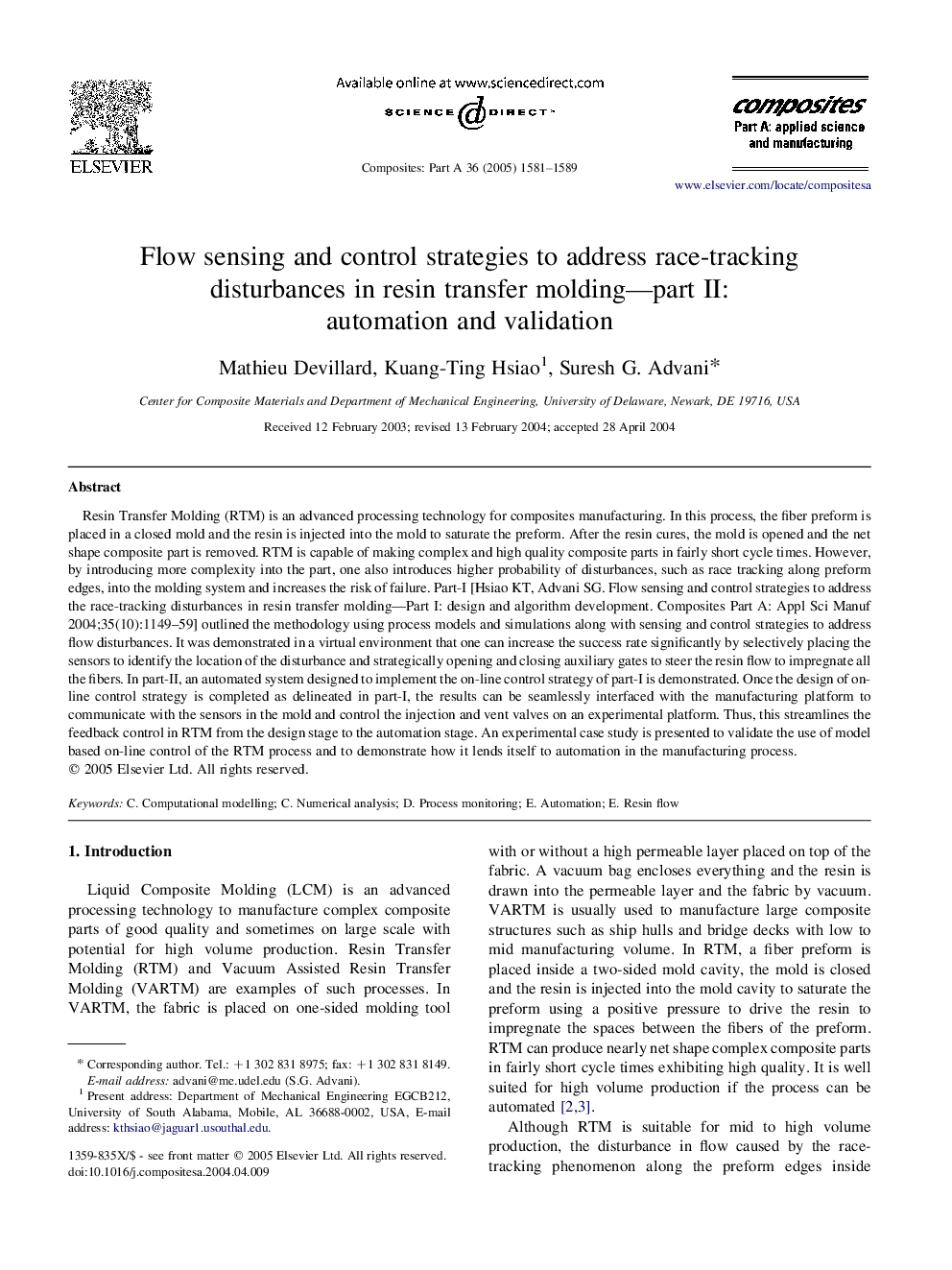| کد مقاله | کد نشریه | سال انتشار | مقاله انگلیسی | نسخه تمام متن |
|---|---|---|---|---|
| 10627756 | 990138 | 2005 | 9 صفحه PDF | دانلود رایگان |
عنوان انگلیسی مقاله ISI
Flow sensing and control strategies to address race-tracking disturbances in resin transfer molding-part II: automation and validation
دانلود مقاله + سفارش ترجمه
دانلود مقاله ISI انگلیسی
رایگان برای ایرانیان
کلمات کلیدی
موضوعات مرتبط
مهندسی و علوم پایه
مهندسی مواد
سرامیک و کامپوزیت
پیش نمایش صفحه اول مقاله

چکیده انگلیسی
Resin Transfer Molding (RTM) is an advanced processing technology for composites manufacturing. In this process, the fiber preform is placed in a closed mold and the resin is injected into the mold to saturate the preform. After the resin cures, the mold is opened and the net shape composite part is removed. RTM is capable of making complex and high quality composite parts in fairly short cycle times. However, by introducing more complexity into the part, one also introduces higher probability of disturbances, such as race tracking along preform edges, into the molding system and increases the risk of failure. Part-I [Hsiao KT, Advani SG. Flow sensing and control strategies to address the race-tracking disturbances in resin transfer molding-Part I: design and algorithm development. Composites Part A: Appl Sci Manuf 2004;35(10):1149-59] outlined the methodology using process models and simulations along with sensing and control strategies to address flow disturbances. It was demonstrated in a virtual environment that one can increase the success rate significantly by selectively placing the sensors to identify the location of the disturbance and strategically opening and closing auxiliary gates to steer the resin flow to impregnate all the fibers. In part-II, an automated system designed to implement the on-line control strategy of part-I is demonstrated. Once the design of on-line control strategy is completed as delineated in part-I, the results can be seamlessly interfaced with the manufacturing platform to communicate with the sensors in the mold and control the injection and vent valves on an experimental platform. Thus, this streamlines the feedback control in RTM from the design stage to the automation stage. An experimental case study is presented to validate the use of model based on-line control of the RTM process and to demonstrate how it lends itself to automation in the manufacturing process.
ناشر
Database: Elsevier - ScienceDirect (ساینس دایرکت)
Journal: Composites Part A: Applied Science and Manufacturing - Volume 36, Issue 11, November 2005, Pages 1581-1589
Journal: Composites Part A: Applied Science and Manufacturing - Volume 36, Issue 11, November 2005, Pages 1581-1589
نویسندگان
Mathieu Devillard, Kuang-Ting Hsiao, Suresh G. Advani,